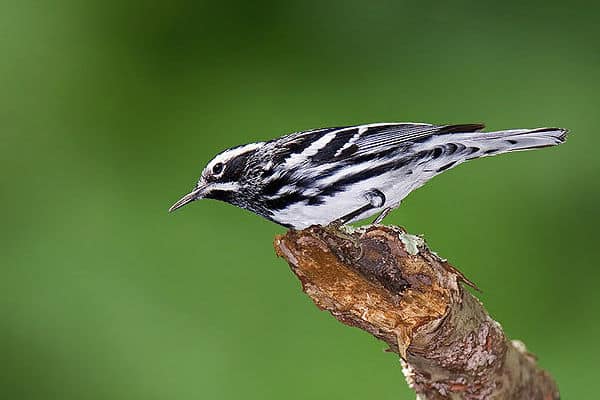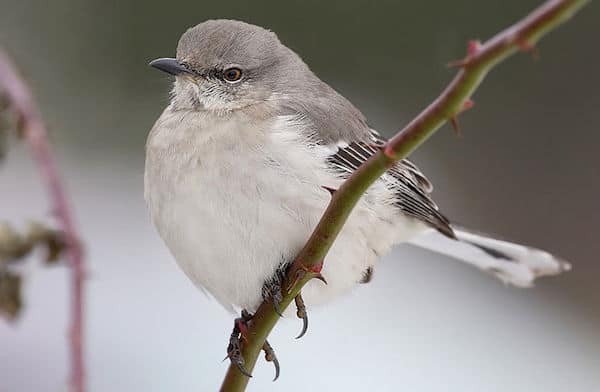Look For
Crawling like a zebra-striped nuthatch along a tree branch or trunk, the black-and-white warbler makes its living gleaning insects from bark. It does not change its streaky black-and-white plumage noticeably between seasons. Its bill is long and decurved compared to other warblers.
The blackpoll warbler and the black-throated gray warbler look similar to the black-and-white. In spring and summer, the blackpoll male has a bold black cap and subtler streaking than the black-and-white. The black-throated gray warbler has a bold facial pattern and a clear white belly. They are about 4-5 inches long.
Listen For
The song sounds like a squeaky wheel turning: weecy-weecy-weecy-weecy. Call note is a sharp, thick chik!
Find It
Creeping along branches and trunks of large trees in old mixed woodlands, the black-and-white warbler can be less obvious than many other warblers. Its regular singing and constant motion are helpful in locating this species.
Feeding Behavior
Sometimes called a black-and-white creeper, these little birds can mostly be found in trees, scouring the bark and limbs for moth and butterfly larvae during the spring season and other arthropods like ants, flies, spiders, beetles, and weevils. They will creep surprisingly quickly under and over large branches on trees to get their prey.
Nesting Behavior
Although they forage in trees, these birds build their nests in the leaf layer that lines the forest floor. Made of dry leaves, pine needles, and grass, this round cup-shaped nest can be found at the base of a tree, log, or stump. The female will choose a well-protected area, usually on the ground but sometimes in a crevice in a tree or stump up to six feet high.
Wow!
Two other names for this species are pied warbler (for its black-and-white appearance) and black-and-white creeper (for its foraging behavior).




